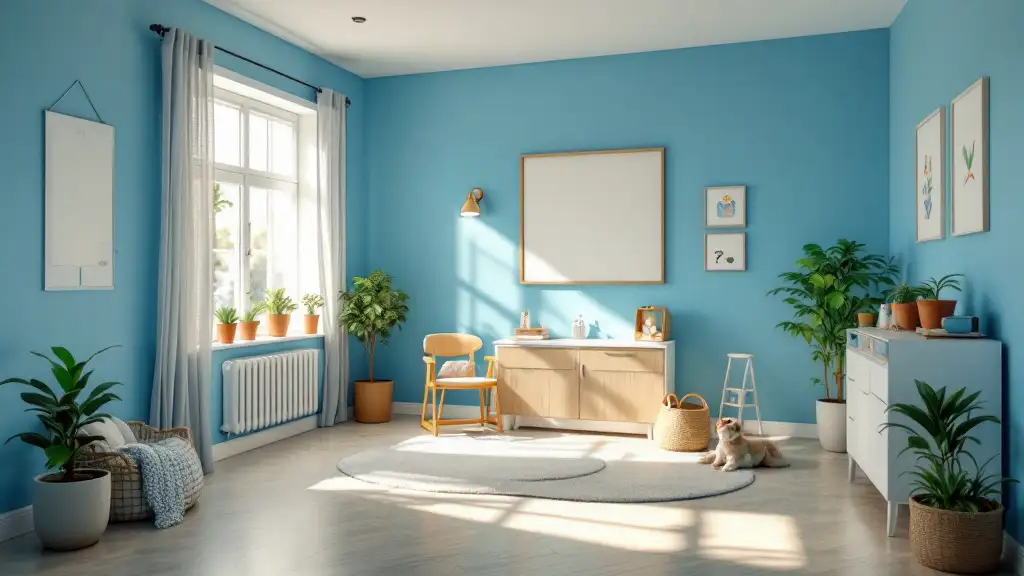Understanding Visual Stimming Toys and Their Role in Sensory Support
Visual stimming toys are an essential component in sensory therapy, designed to engage and soothe individuals with autism and sensory processing disorders. These captivating tools not only stimulate the visual senses but also promote emotional regulation, focus, and developmental progress. This article explores various types of visual stimming toys, their benefits, and practical ways to incorporate them into daily routines, highlighting their significance in fostering a supportive sensory environment.
Diverse Types and Categories of Visual Stimming Toys
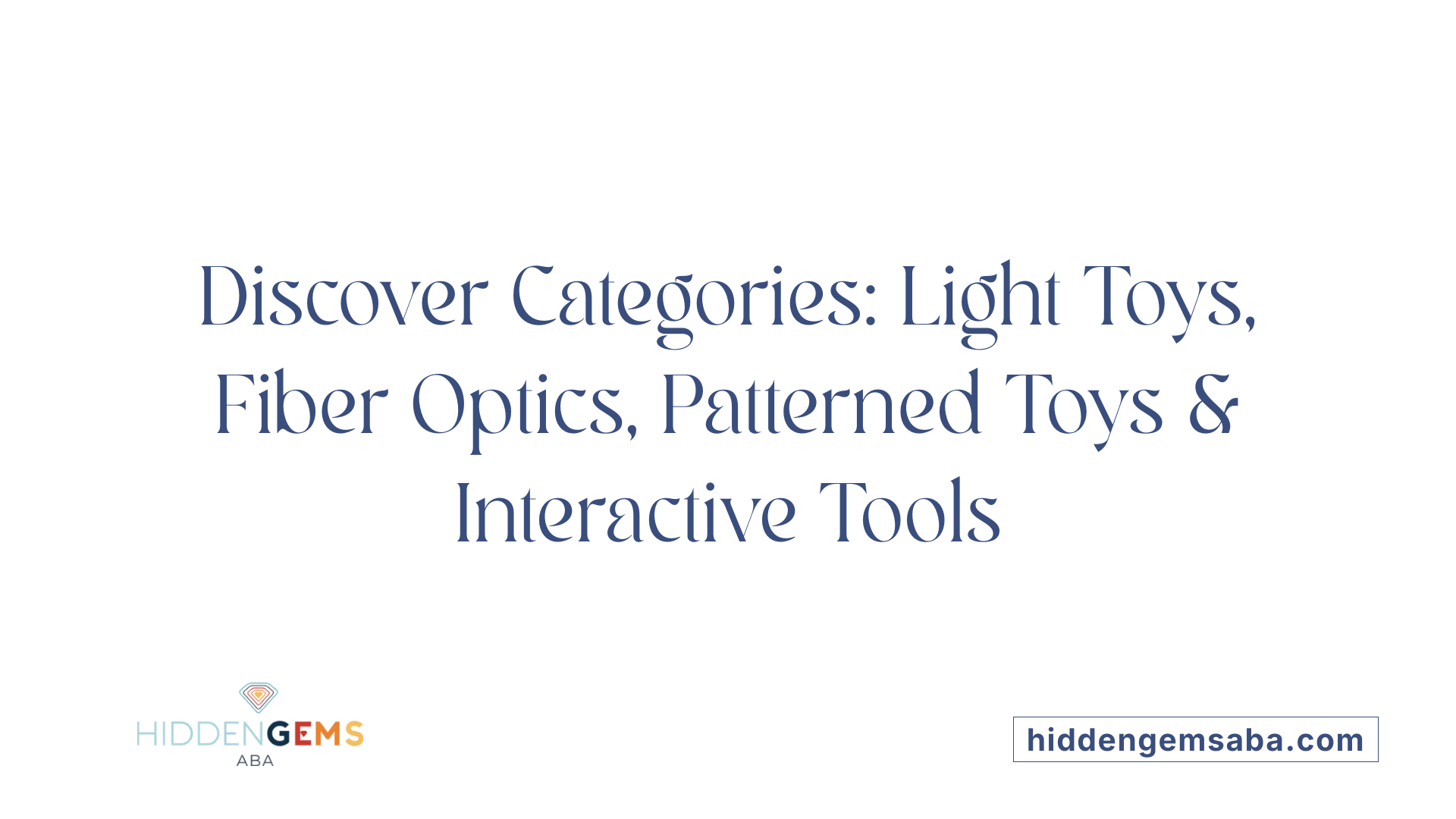
What are the different types and categories of visual stimming toys?
Visual stimming toys cover a broad spectrum of items designed to stimulate the visual senses and foster visual understanding. These toys include various categories such as projectors and light toys, fiber optics and glowing toys, visual patterned toys, sensory globes, and interactive visual tools.
Projectors and light toys are popular for creating immersive environments filled with dynamic shapes, colors, and patterns. Examples include star lamp projectors and kaleidoscope lamps that project intricate patterns onto surfaces, helping children develop focus and visual discrimination.
Fiber optics and glowing toys, like fiber optic light plumes or plasma ball lights, emit gentle, captivating light that can calm or energize children. These items often incorporate movement and color change, enhancing multisensory engagement.
Visual patterned toys and sensory globes—such as twinkling globes or kaleidoscope lamps—offer repetitive visual stimuli that can be soothing. These toys assist in improving visual tracking, discrimination, and processing, encouraging children to recognize shapes and colors.
Interactive and dynamic visual tools, such as light-up globes, interactive dance floors, and infinity mirror toys, are designed to inspire exploration. They often combine light, reflection, and motion, which are key to sensory development and calming.
Together, these categories provide a rich array of options suited for various sensory needs, supporting visual attention, processing, and regulation. They are valuable additions to therapeutic and educational settings for children with autism and sensory processing challenges.
Benefits for Sensory Development and Autism Support
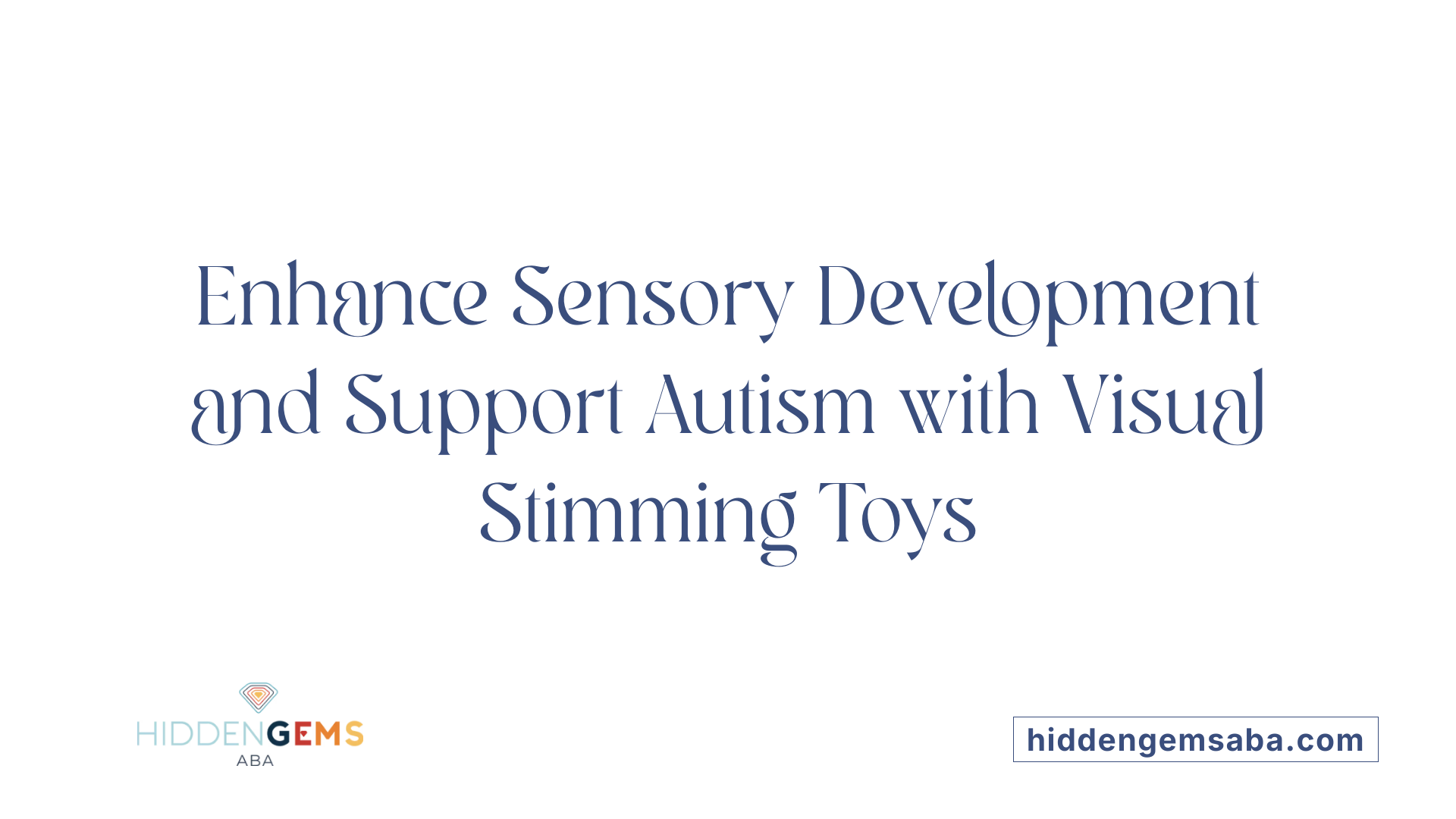
How do visual stimming toys benefit individuals with sensory processing disorders or autism?
Visual stimming toys are specially designed to provide sensory input that can help individuals with autism and sensory processing challenges manage their environment more comfortably. These toys offer calming visual effects, such as flowing lights or glittering displays, which can soothe overstimulated feelings and promote emotional regulation.
By engaging the visual system, these toys support the development of crucial skills like visual processing, discrimination, and focus. For example, toys like liquid motion lights, kaleidoscope lamps, and plasma balls stimulate the eyes and help children explore light, color, and movement. This exploration fosters better visual perception and can reduce anxiety caused by sensory overload.
Furthermore, visual sensory toys encourage self-expression and creativity, providing a non-verbal way to communicate feelings and interests. During shared play with caregivers or peers, these toys can serve as conversation starters and promote social interaction.
Overall, visual stimming toys not only soothe and calm but also help develop important sensory and cognitive skills, supporting emotional well-being and making the environment more accessible for children with autism and sensory differences.
Examples and Options for Different Needs
Many children and individuals use visual stimming behaviors to self-soothe, focus, or manage sensory overload. Common activities include staring at spinning lights or moving objects, flicking fingers in front of the eyes, and watching reflective surfaces or shifting patterns. These actions help enhance focus or regulate emotions.
In addition to everyday behaviors, specific toys can support visual stimulation effectively. Popular choices include liquid motion toys, glitter discs, glow UV spaghetti, and infinity mirror toys. These items are designed to explore movement, light, and color, providing both calming and engaging experiences.
For calming and alerting purposes, visual toys like jellyfish lamps, galaxy glitter lamps, and star lamp projectors are favored. They create relaxing environments or sparks of excitement through gentle light displays. These are often labeled as popular or new, reflecting ongoing interest and innovation.
Support for motor and cognitive skills can be integrated through toys like kaleidoscope lamps, sensory globes, and matching games. Puzzles and shape recognition toys, along with tactile gel shapes, help improve visual discrimination, organization, and finger strength.
Accessible options for various age groups make it possible for both children and adults to benefit. For example, sensory backpacks and interactive dance floors cater to different needs and mobility levels. All these products are typically found in specialized stores, especially online.
Where to find these resources? You can explore dedicated websites like The Therapy Store, an Australian retailer with over 10 years of experience. Their catalog includes liquid motion toys, glow lights, sensory lamps, and more, all intended to support autism and sensory development. Their products are categorized clearly, making it easy to choose the right visual stim toys for specific needs.
Understanding the range of visual activities and the available tools can greatly improve engagement, learning, and emotional regulation for individuals with sensory preferences.
Incorporating Visual Stimming into Daily Life and Strategies for Management
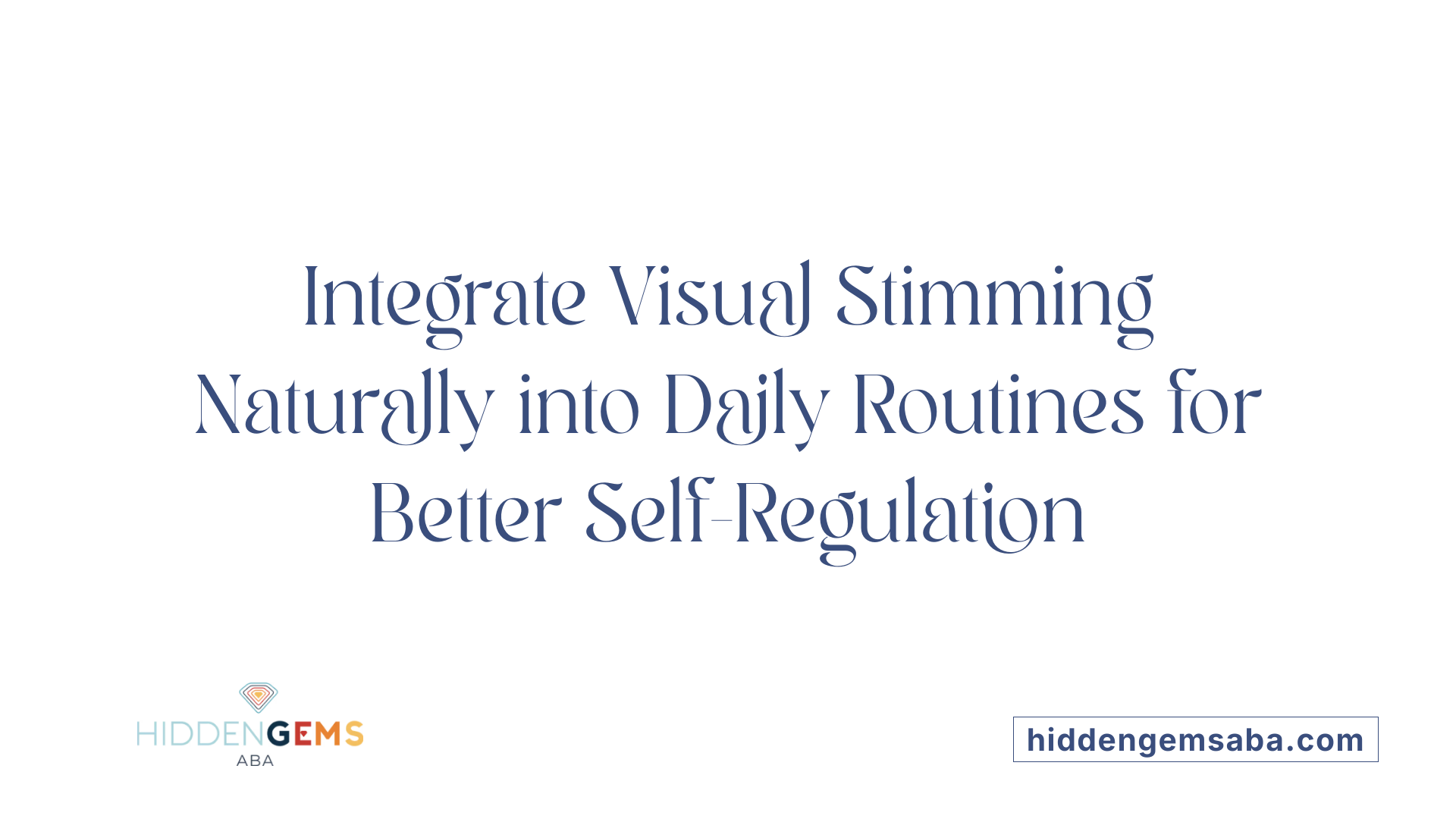
How can visual stimming activities be incorporated into daily routines?
Integrating visual stimming activities into everyday routines can provide children with autism a way to self-regulate and find comfort. Activities such as engaging with visually stimulating objects—like spinning toys, Jellyfish Lamps, or glitter globes—can be offered during calm periods to promote relaxation.
Creating a sensory-friendly environment enhances this process. Soft lighting, gentle visual patterns, and accessible preferred stimuli, like galaxy glitter lamps or LED moonlight cushions, foster calming experiences. Including visual activities like watching moving objects, drawing repetitive geometric patterns, or organizing colorful items can boost focus and serve as self-soothing techniques.
Practical integration might involve using visual timers during transitions or setting aside designated visual breaks during stressful moments. Observing the child's specific triggers and preferences ensures that the visual stimuli provided support rather than overwhelm, helping children develop better sensory regulation and emotional control.
What treatment approaches can support managing visual stimming behaviors?
Managing visual stimming behaviors effectively often requires a multifaceted strategy. Consulting healthcare professionals, such as occupational therapists or behavioral therapists, is essential to understand individual needs and triggers.
Occupational therapy can be particularly beneficial by introducing sensory regulation techniques and environmental modifications. For example, using calming visual toys like fiber optic light plumes or sensory aquariums can help satisfy sensory needs safely. Behavioral approaches, such as Applied Behavior Analysis (ABA), focus on teaching alternative coping skills and reinforcing positive behaviors, reducing harmful or disruptive visual stimming.
In addition, creating structured routines and reducing environmental stressors, such as bright lights or busy displays, can lessen the urge to engage in compulsive visual behaviors. Safe alternatives—including sensory toys like plasma ball lights or kaleidoscope lamps—serve as substitutes that fulfill sensory drives without causing distress. Overall, combining professional guidance with personalized environmental adjustments can significantly help children manage their visual stimming effectively, supporting their development and well-being.
Conclusion and Resources
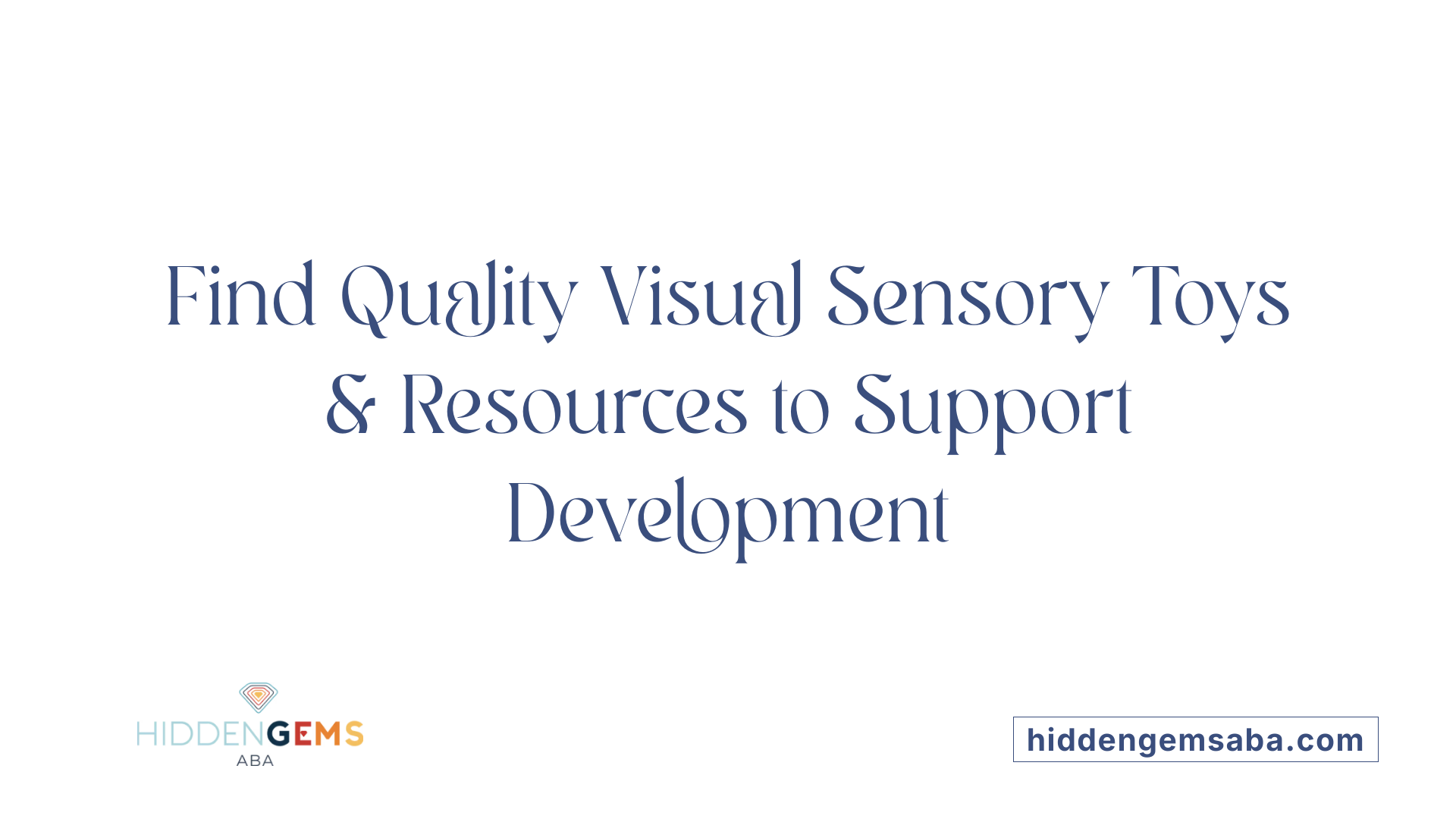 Understanding the value of visual stimulation in sensory development is essential, especially for children with autism. Visual sensory toys stimulate visual processing, improve discrimination, and promote focus, helping children explore light, color, and shape in a calming way.
Understanding the value of visual stimulation in sensory development is essential, especially for children with autism. Visual sensory toys stimulate visual processing, improve discrimination, and promote focus, helping children explore light, color, and shape in a calming way.
Products like jellyfish lamps, galaxy glitter lamps, kaleidoscope lamps, and interactive light-up toys serve as engaging tools for sensory exploration. These toys are designed to be both entertaining and educational, fostering skills such as visual organization, shape and color recognition, and motor planning.
Accessing these tools is simple through specialized online stores. For example, the website associated with The Therapy Store offers a wide selection of visual sensory toys, including popular items like the Tranquil Turtle, glitter globes, plasma balls, and sensory wall panels. These are often categorized as 'popular' or 'new,' helping shoppers find trending or recent additions.
Learning about and utilizing visual stimulation products can greatly enhance a child's sensory experience, supporting their developmental journey while providing calming, non-verbal ways to understand and communicate with their surroundings. For those seeking resources, searching with keywords like "where to buy visual sensory toys for autism and sensory development" can lead to reliable suppliers offering a comprehensive range of sensory tools suitable for all ages.
Empowering Sensory Development through Visual Stimulation
Incorporating visual stimming toys into daily routines and therapy strategies offers a powerful way to support sensory regulation, learning, and emotional well-being. These engaging and calming tools are accessible through numerous specialized retailers, making it easier than ever to find the perfect product for individual needs. Understanding and leveraging the benefits of visual stimulation can significantly enhance the quality of life and developmental progress for children and adults with sensory processing differences, fostering an environment where everyone can thrive.
References
- Visual Sensory Toys for Kids and Teens with Autism
- Visual Sensory Toys | Visual Stimulation Toys - Special Needs Toys
- Visual Toys & Tools for Sensory Processing Disorders
- Buy Visual Sensory Toys & Visual Aids Online - The Therapy Store
- Visual Sensory Toys
- Visual Sensory Toys for Kids and Teens with Autism
- 7 Benefits of Sensory Fidget Toys for Children with Autism - AT4K
- Visual Sensory Toys - Enabling Devices



